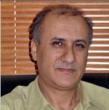Translating Dickinson's "There Came a Day at Summer's Full" into Arabic
Thu, 2015-03-26 14:40 — Nabil Mahmoud Alawi
The news about an Arabic interest and a consequent translation of the poems of Emily Dickinson surprised the editor of the Kansas City Star; he wrote: "Emily Dickinson's poems, which are not well-known even in this, her native country, are said to have passed through several editions in the Arabic." Today, however, the news ceases to surprise. The nineteenth century witnessed an active movement of translating literary and religious texts from English into Arabic. The Bible took a major part of their concern; following the Bible were religious sermons, hymns, or prayers. Several religious texts from the nineteenth century that were translated from English into Arabic survived. The most well-known is "Sablib al Masih" (Christ's cross), a collection of twenty hymns which was translated by an anonymous translator. Arab philologists such as Nasif al Yaziji (1800-1971) and Butrus al Bustani (1819-83) were employees at the American mission in Beirut in the 1840's, and their jobs facilitated contact with American culture. These figures were contemporaries of Emily Dickinson. Al Bustani went to Abeih Seminary, which was similar to Dickinson's Mount Holyoke Seminary. However, both Al-Bustani and Al-Yaziji died before the publication of Emily Dickinson's poems and after they laid the foundation for an interest in theological literature coming from the United States among Christian Arabs.
Emily Dickinson's familiarity with the Middle East, particularly the Arab World, seems to have been strengthened through her friendship with Mrs. Abby Bliss, whose husband was one of the founders of the University of Beirut in about 1863. After the death...
Journal Title, Volume, Page:
The Emily Dickinson Journal 01/1997; 6(2):84-89. DOI: 10.1353/edj.0.0017
Year of Publication:
1997
Preferred Abstract (Original):
Arabic interest in Emily Dickinson's poetry
began immediately after the publication of the first collection of her
poems, Poems by Emily Dickinson, in 1890 under the editorship of Mrs.
Mabel Loomis Todd and Colonel Higginson. In 1891, the July 16th issue of
Nation wrote about "an Arabic translation of Dickinson's poems made in
Syria" and that it had "passed through several issues." The same news
was repeated in the Critic and in the Christian Union two days later and
two weeks later in Kansas City Star.The news about an Arabic interest and a consequent translation of the poems of Emily Dickinson surprised the editor of the Kansas City Star; he wrote: "Emily Dickinson's poems, which are not well-known even in this, her native country, are said to have passed through several editions in the Arabic." Today, however, the news ceases to surprise. The nineteenth century witnessed an active movement of translating literary and religious texts from English into Arabic. The Bible took a major part of their concern; following the Bible were religious sermons, hymns, or prayers. Several religious texts from the nineteenth century that were translated from English into Arabic survived. The most well-known is "Sablib al Masih" (Christ's cross), a collection of twenty hymns which was translated by an anonymous translator. Arab philologists such as Nasif al Yaziji (1800-1971) and Butrus al Bustani (1819-83) were employees at the American mission in Beirut in the 1840's, and their jobs facilitated contact with American culture. These figures were contemporaries of Emily Dickinson. Al Bustani went to Abeih Seminary, which was similar to Dickinson's Mount Holyoke Seminary. However, both Al-Bustani and Al-Yaziji died before the publication of Emily Dickinson's poems and after they laid the foundation for an interest in theological literature coming from the United States among Christian Arabs.
Emily Dickinson's familiarity with the Middle East, particularly the Arab World, seems to have been strengthened through her friendship with Mrs. Abby Bliss, whose husband was one of the founders of the University of Beirut in about 1863. After the death...
| Attachment | Size |
|---|---|
| Translating_Dickinson's_"There_Came_a_Day_at_Summer's_Full"_into_Arabic | 539.93 KB |

